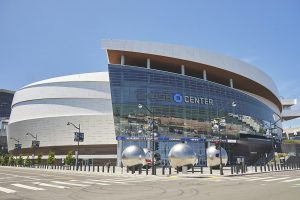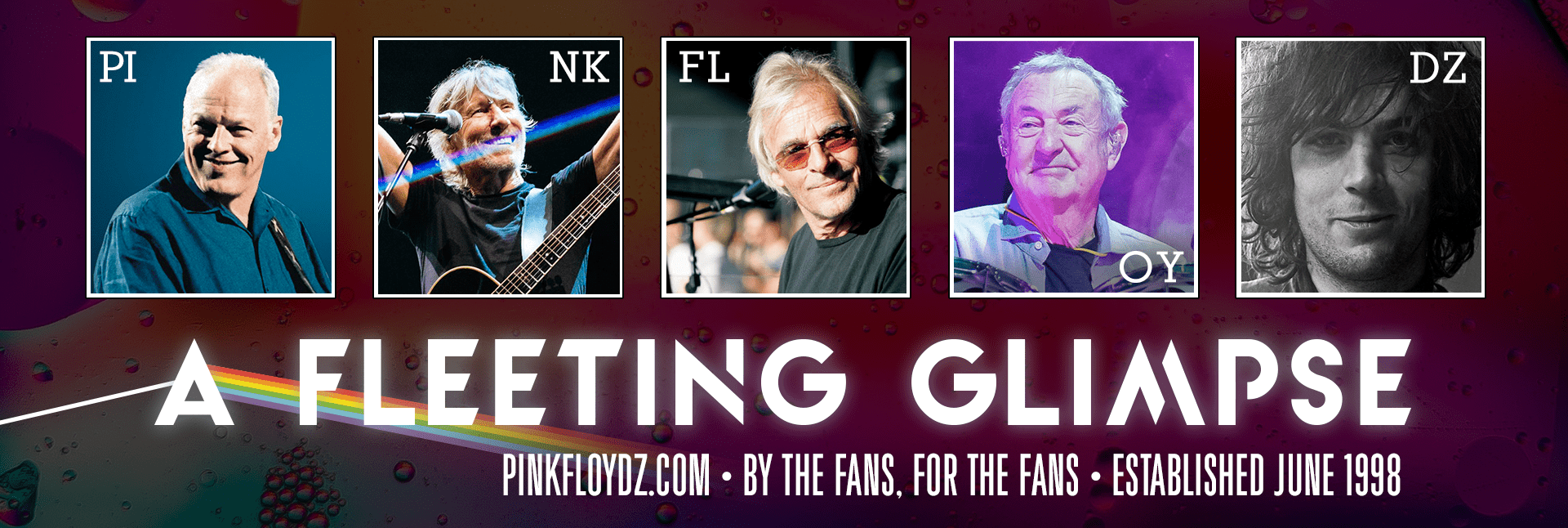SAN FRANCISCO — Near the conclusion of the first of two concerts at Chase Center, rock and roll legend Roger Waters told a story about how he wrote the following song, “Two Suns in the Sunset,” about dying in a nuclear war. In one of just a couple of times he addressed the crowd at length, Waters explained the idea behind the Doomsday Clock—judging by the age of the crowd, it was not a new concept—and how it’s as close to midnight now as it’s ever been.
“I’m a bit worried of dying in a nuclear war right now,” Waters said. “Eastern Europe is a shit show. The only reason the world didn’t end during the Cold War was because JFK and Nikita Khrushchev spoke every day,” he said, pointing out that President Joe Biden and Vladimir Putin do not do that.
“But I’m just a simple bass player,” he added.
The melancholic song that followed, from Waters’ last album with Pink Floyd, was paired with a stylized video of a mushroom cloud, followed by forests, cities, oceans and people being vaporized, their ashes falling like confetti.
By this point in the concert, the 79-year-old rocker had addressed wars, police brutality against Black and Brown people, injustice against indigenous people in America and abroad, greed, corruption and the inherent ills of capitalism. So what’s a little end of the world? Especially when it’s set against some of the most classic rock songs of all time.
Roger Waters’ This Is Not a Drill Tour was a sight to behold, with an in-the-round layout, giant cross-shaped video screen, crisp visuals bound to have people talking and a terrific music performance.
On a serious note, Waters’ heavy-handed idealism—starting with the announcement right before the show started that anyone who didn’t agree with his politics should just leave—largely hit home with the San Francisco audience. Labeling every president since Ronald Reagan for killing people in other countries with their international doctrines is not a new concept here; not even Obama and Biden were spared, albeit Biden’s listed crime was only “he’s just getting started.”
That moment came during the downtempo 1992 solo track, “The Bravery of Being Out of Range,” which Waters led from the piano. A big theme of the show was Waters’ protestation of U.S. drone strikes (which were Obama’s and Trump’s crimes in the previous song). The giant cross-shaped video screen hovering about the stage repeatedly returned to that theme.
Most of Waters’ conversations with the audience took place in the form of captions, written in first person, that accompanied the often-impressive visuals. At one point, the captions were of two people having a conversation about the infamous 2007 U.S. drone strike that killed two Reuters photographers and civilians—which only came to light because of whistleblower Chelsea Manning and WikiLeaks’ Julian Assange.
“What the fuck was that? Who did we just kill?” the dialogue splayed own the video screen, which then flashed statements of “FREE ASSANGE” and to imprison those responsible for the killing.
The other repeated theme was police brutality, specifically on Black and Brown people. During another Waters solo song, “The Powers That Be,” cell phone and police videos played, showing the faces of people murdered by police (Oscar Grant, Philando Castile, George Floyd, Breonna Taylor and more) and their crimes—generally, “Being Black.” Waters led his talented band from the bass for this song, though he switched back and forth between that and guitar, or simply singing.
On to the music: The sound quality approached studio-level perfect, at least in the lower bowl. The seven-member band and two backing singers largely played third fiddle to Waters and the amazing visuals and show production, yet they drove the whole show forward. Guitarists Dave Kilminster and Jonathan Wilson, as well as saxophonist Seamus Blake, had the most opportunities to shine on their impressive solos, filling in on the classic songs. The backup vocalists used their voices more as instruments, adding texture to the songs.
The show was split into two one-hour sets, both heavy on Pink Floyd classics. The band opened with an organ-led “Comfortably Numb,” set to a dystopian cityscape that then zoomed in on streets filled with protestors, before seamlessly blending “The Happiest Days of Our Lives,” “Another Brick in the Wall, Part 2” and “Another Brick in the Wall, Part 3” into a single entity.
A touching rendition of “Wish You Were Here” was dedicated to the late Syd Barrett, Pink Floyd cofounder.
“When you lose someone you love, it does serve to remind you this is not a drill,” read the text on the video screens, explaining the name of the tour.
Waters also played a new song that he said he wrote during lockdown, “The Bar.” Or, rather, he played a couple of passages from the soft piano ballad, backed only by an acoustic guitar, saying the whole thing is 15 minutes long. The concept behind the song is that the titular bar is a place where everyone is welcome to express their opinions and thoughts without retribution.
The part that he performed was about a Lakota woman from Standing Rock. It was set against video of protests at Standing Rock in North Dakota. The caption read, “The Lakota Sioux protecting their land against the black snake.”s giant flying sheep—a drone!—was one of the show’s climaxes.
Following a roughly 20-minute intermission, the band returned for a largely uptempo second set filled with more songs from The Wall, starting with “In the Flesh,” as a giant inflatable pig flew around doing slow-motion aerial stunts, and Waters, now dressed in a Nazi-style full-length coat, marched down the stage, followed by two people in riot gear. At the end, one of them handed Waters a light-up prop machine gun, which he rattled off in the direction of attendees. Completing the Nazi motif, large red banners came down with Pink Floyd’s crossed-hammer logo.
Calmer solo songs “Deja Vu” and “Is This Really What We Want” led into “Money,” which got one of the loudest ovations of the night and began the night’s conclusion with “Us and Them,” “Any Colour You Like,” “Brain Damage” and “Eclipse.” Waters reprised another section of “The Bar,” this time mentioning it was about his wife, before concluding with Floyd’s “Outside the Wall.”
Review with thanks to Roman Gokhan

Capacity 19,000+
Chase Center is an indoor arena in the Mission Bay neighborhood of San Francisco, California. The building is the home venue for the Golden State Warriors of the National Basketball Association (NBA) and occasionally for the University of San Francisco men’s and women’s basketball teams in the National Collegiate Athletic Association (NCAA). The Warriors, who have been located in the San Francisco Bay Area since 1962, played their home games at Oakland Arena in Oakland from 1971 to 2019. Chase Center opened on September 6, 2019, and seats 18,064 for Warriors games.
Can YOU help? We are looking for any material related to this show. Scans of posters, news items, ticket stubs, show pictures, or anything else you may think be of interest to our visitors. Thanks. Please send any show material to tony@pinkfloydz.com
